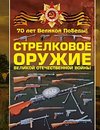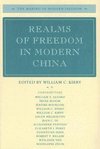
Maori mythology
Source: Wikipedia. Pages: 51. Chapters: Mana, Rangi and Papa, Matariki, Aitu, Hine-nui-te-po, Rohe, Makutu, Taranga, Ruatapu, Tongahiti, Marikoriko, Ngaro, Paikea, Karihi, Ikatere, Uranga-o-te-ra, Rongomai, Makeatutara, Nga Atua, Hine-kau-ataata, Hahau-whenua,... Viac o knihe
Produkt je dočasne nedostupný
16.81 €
bežná cena: 19.10 €
O knihe
Source: Wikipedia. Pages: 51. Chapters: Mana, Rangi and Papa, Matariki, Aitu, Hine-nui-te-po, Rohe, Makutu, Taranga, Ruatapu, Tongahiti, Marikoriko, Ngaro, Paikea, Karihi, Ikatere, Uranga-o-te-ra, Rongomai, Makeatutara, Nga Atua, Hine-kau-ataata, Hahau-whenua, Wahieroa, Rehua, Auahituroa, Apakura, Urutonga, Matuku-tangotango, Nga Manawa, Atutahi, Kaitangata, Irawaru, Paoro, Ponaturi, Maero, Hinepiripiri, Tukoio, Haumia-tiketike, Nuku-mai-tore, Kupe, Maui, Hawaiki, Arawa, Takatapui, Maori migration canoes, Tiki, Ngatoro-i-rangi, Edward Robert Tregear, Pania, Hei-tiki, Io Matua Kore, Matakerepo, Takitimu, Kiwa, Tinirau and Kae, Mahuhu-ki-te-rangi, Rata, Te Whanganui-a-Tara, Te Ika-a-Maui, Ngahue, Mount Hikurangi, Mataatua, Mokoia Island, Family tree of the Maori gods, Punga, Nukutere, Te Paepae-ki-Rarotonga, Aotea, Rahiri, Kurahaupo, Mau rakau, Mount Taranaki legend, Toi, Manaia, Whakatau, Horouta, Tohunga, Tawhirirangi, Te Aratawhao, Ohomairangi, Tuwhakararo, Araiteuru, Totara-i-karia, Matoka-rau-tawhiri, Tama-te-kapua, Hakuturi, Mahangaatuamatua, Tokomaru, Hatupatu, Arahura, Tuwhenua, Mamari, Te Hoiere, Waipapa, Patupairehe, Muturangi, Tinana, Puhaorangi, Te Rangiuamutu, Te Ririno, Hinauri, Tauira, Uruaokapuarangi, Te Kohatuwhenua, Taikoria, Te Aratauwhaiti, Te Wakatuwhenua, Te Rangimatoru, Te Wakaringaringa, Matahourua, Toto, Tunui-a-rangi, Ika-Roa, Kuramarotini, Kui, Hoturapa, Rangahore, Motumotuahi, Manuka, Hinakipakau-o-te-rupe, Ngatokimatawhaorua, Rongorongo, Oturereao, Karaerae, Pangatoru, Okoki, Nuku-tai-memeha, Te Waka a Maui, Moekakara, Riukakara, Ruakaramea, Arautauta, Kahutara, Tahatuna, Aotearoa, Haungaroa, Rarohenga. Excerpt: In the Maori mythology of some tribes, Kupe was involved in the Polynesian discovery of New Zealand. There is contention concerning the status of Kupe. The contention turns on the authenticity of later versions of the legends, the so-called 'orthodox' versions closely associated with S. Percy Smith and Hoani Te Whatahoro Jury. Unlike the attested tribal traditions about Kupe recorded before Smith and Jury, the orthodox version is precise in terms of dates and in offering placenames in Polynesia where Kupe is supposed to have lived or departed from. The orthodox version also places Kupe hundreds of years before the arrival of the other founding canoes, whereas in the earlier traditions, Kupe is most definitely contemporary with those canoes (Simmons 1976). In addition, according to legends of the Whanganui and Taranaki regions Kupe was a contemporary of Turi of the Aotea canoe. In other traditions, Kupe arrived around the year 1400 on other canoes, including Tainui and Takitimu (Simmons 1976:20-25). Stephenson Percy Smith, 1905 In the "orthodox" version, Kupe was a great chief of Hawaiki who arrived in New Zealand in 925 AD. He left his cousin Hoturapa to drown during a fishing expedition and kidnapped his wife, Kuramarotini, with whom he fled in her great canoe Matahourua. During their subsequent journeys, they overcame numerous monsters and sea demons, including the great octopus named as Te Wheke-a-Muturangi, and discovered New Zealand. Returning to Hawaiki, Kupe told of his adventures and convinced others to migrate with him (Craig 1989:127; see also External links below). Davis Simmons said "A search for the sources of what I now call 'The Great New Zealand Myth' of Kupe, Toi and the Fleet, had surprising results. In this form they did not exist in the old manuscripts nor in the wh...
- Vydavateľstvo: Books LLC, Reference Series
- Formát: Paperback
- Jazyk:
- ISBN: 9781156134887

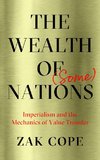
 Anglický jazyk
Anglický jazyk 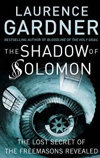
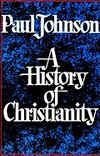

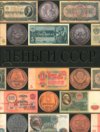
 Ruský jazyk
Ruský jazyk 
